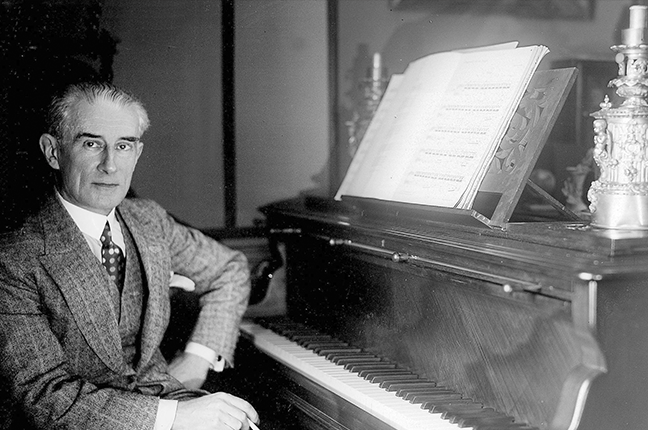
The Story Behind Ravel’s Jeux Deau
Jeux d’eau is a piano piece composed by Maurice Ravel in 1901, considered one of the finest examples of his early style and a masterpiece[…]

Top 10 Ravel Songs
Maurice Ravel (1875-1937) stands as a monumental figure in 20th-century classical music, celebrated for his unique and innovative compositions. His works are a blend of[…]

Maurice Ravel: The Master of Musical Impressionism
In the realm of classical music, few composers have left as profound an impact as Maurice Ravel. With his unparalleled ability to blend colors, evoke[…]

Life and History of Ravel
Maurice Ravel was a French composer of Swiss-Basque descent, who lived from 1875 to 1937. He is often associated with Impressionism, although he rejected the[…]

Ravel – Short Biography
Ravel – Short Biography Joseph Maurice Ravel (7 March 1875 – 28 December 1937) was a French composer, pianist and conductor. He is often associated with[…]

Ravel – Piano Concerto for the Left Hand – Music | History
Ravel – Piano Concerto for the Left Hand – Music | History The Piano Concerto for the Left Hand in D major was composed by Maurice[…]

Ravel – Daphnis et Chloé – Suite No. 2
Daphnis et Chloé is a ballet in one act with three parts (scenes) by Maurice Ravel described as a “symphonie chorégraphique” (choreographic symphony). The scenario[…]

Ravel – Jeux deau
Maurice Ravel – Jeux deau Jeux d’eau is a piece for solo piano by Maurice Ravel. The title is often translated as “Fountains”, “Playing Water” or[…]

Ravel – Le tombeau de Couperin
Maurice Ravel – Le tombeau de Couperin Le Tombeau de Couperin is a suite for solo piano by Maurice Ravel, composed between 1914 and 1917. The[…]

Ravel – Dafnis e Cloe Suite No. 2
Maurice Ravel – Dafnis e Cloe Suite No. 2 Daphnis et Chloé is a ballet in one act with three parts (scenes) by Maurice Ravel described[…]